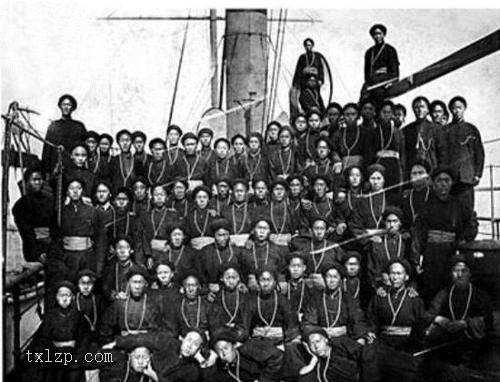Period:Unknown Production date:18thC
Materials:copper, gold, brass,
Technique:gilded, cast,
Subjects:lama
Dimensions:Height: 38 centimetres
Description:
A figure of Padmasambhava seated on lotus throne; holding a vajra and purnaghata (vase of life); the sun-moon symbol and a peacock feather on his hat. Cast in a gilt copper and brass.
IMG
![图片[1]-figure BM-1942-0416.1-China Archive](https://chinaarchive.net/Unknown/43/mid_00033977_001.jpg)
![图片[2]-figure BM-1942-0416.1-China Archive](https://chinaarchive.net/Unknown/43/mid_00083456_001.jpg)
![图片[3]-figure BM-1942-0416.1-China Archive](https://chinaarchive.net/Unknown/43/mid_00506380_001.jpg)
Comments:Zwalf 1985Padmasambhava is a deified teacher considered a second Buddha by the rNying-ma-pa sect. Said to have visited Tibet in the 8th century, he brought Tantric practices when another Indian master was establishing orthodox monasticism. The tradition of turning ‘tamed’ native deities into protectors of Buddhism is supposed to have started with him. Padmasambhava is popular with the older sects and has numerous manifestations. This very common form shows him with ‘vajra’ and vase of life but lacks the lost ‘khaṭvāṅga’, or ‘yogin’’s staff. On his hat is the sun-moon symbol of transcended duality and a peacock feather.
Materials:copper, gold, brass,
Technique:gilded, cast,
Subjects:lama
Dimensions:Height: 38 centimetres
Description:
A figure of Padmasambhava seated on lotus throne; holding a vajra and purnaghata (vase of life); the sun-moon symbol and a peacock feather on his hat. Cast in a gilt copper and brass.
IMG
![图片[1]-figure BM-1942-0416.1-China Archive](https://chinaarchive.net/Unknown/43/mid_00033977_001.jpg)
![图片[2]-figure BM-1942-0416.1-China Archive](https://chinaarchive.net/Unknown/43/mid_00083456_001.jpg)
![图片[3]-figure BM-1942-0416.1-China Archive](https://chinaarchive.net/Unknown/43/mid_00506380_001.jpg)
Comments:Zwalf 1985Padmasambhava is a deified teacher considered a second Buddha by the rNying-ma-pa sect. Said to have visited Tibet in the 8th century, he brought Tantric practices when another Indian master was establishing orthodox monasticism. The tradition of turning ‘tamed’ native deities into protectors of Buddhism is supposed to have started with him. Padmasambhava is popular with the older sects and has numerous manifestations. This very common form shows him with ‘vajra’ and vase of life but lacks the lost ‘khaṭvāṅga’, or ‘yogin’’s staff. On his hat is the sun-moon symbol of transcended duality and a peacock feather.
© Copyright
The copyright of the article belongs to the author, please keep the original link for reprinting.
THE END



![[Qing Dynasty] British female painter—Elizabeth Keith, using woodblock prints to record China from the late Qing Dynasty to the early Republic of China—1915-China Archive](https://chinaarchive.net/wp-content/uploads/2022/11/image-191x300.png)

